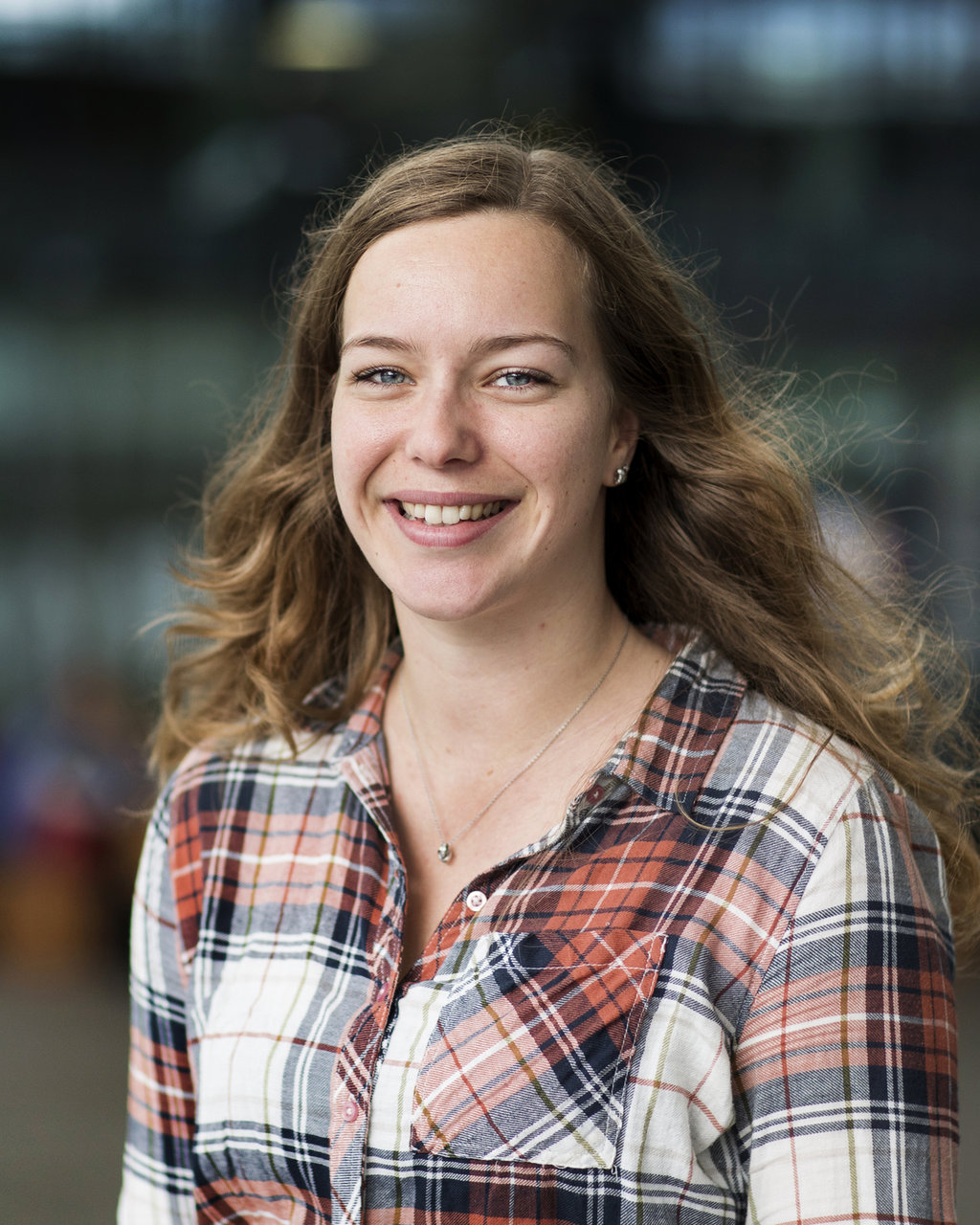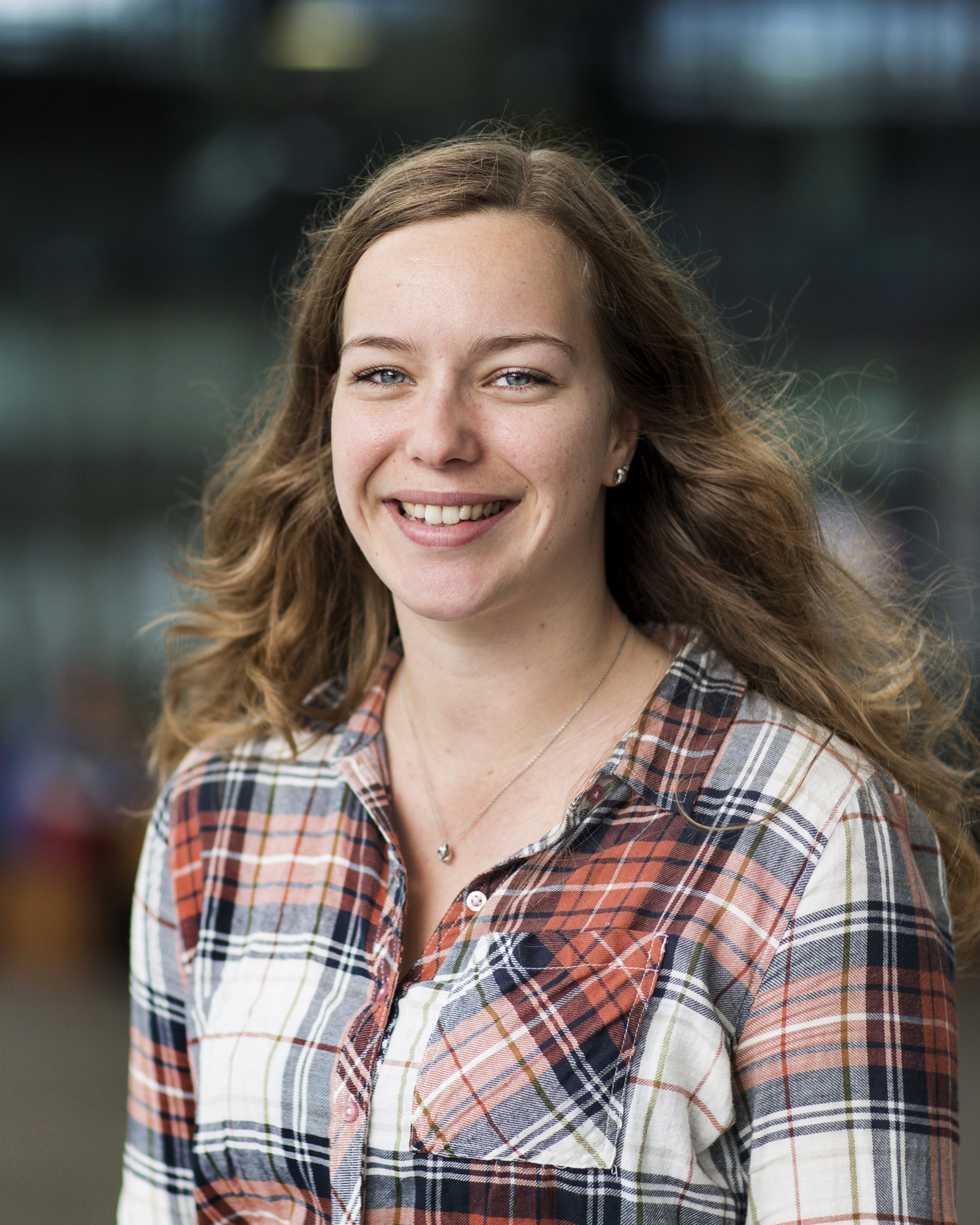Research highlight
Spectral sensing catches the eye
January 2022 was a very special month for Kaylee Hakkel. Not only did she successfully defend her PhD thesis, also the paper she co-first authored with Maurangelo Petruzzella was published in Nature Communications and attracted a lot of attention. Here, both authors tell how their research resulted in a breakthrough commercial product: a miniaturized near-infrared sensor
At first glance Kaylee Hakkel’s research story seems a rather straightforward one. When she started her PhD project in the Photonics and Semiconductor Nanophysics group, the group had just published a paper describing their invention of a micro-spectrometer. At the time, group leader Andrea Fiore stated that the frequency range covered by the spectrometer was still too small to be of interest for most applications. However, he expected that in a couple of years, that problem should be solved. That solution is exactly what Hakkel presented: a spectral sensor chip that is comparable in size to chips embedded in today’s smartphone. This chip covers a wavelength range of several hundreds of nanometers in the near-infrared, and that was proven to work for milk and plastic sensing. Just a matter of taking the initial design and tweaking it somewhat - one would think.

"To increase the wavelength range and make it fit for a chip, we had to start from scratch again. "
Kaylee Hakkel | PhD in Applied Physics

Many iterations
‘Well… not exactly,’ both Hakkel and her then co-supervisor and now colleague Maurangelo Petruzzella smile. Hakkel: ‘The first design, based on a double-membrane structure, enabled the first miniaturized spectrometer, which traditionally are big systems that can only be operated by professionals. Though it had a nice resolution with narrow linewidths, it had a limited operating range and it was rather hard to use outside the lab due to the presence of a movable mechanical part. To increase the wavelength range and make it fit for a chip, we had to start from scratch again.’ During the four years of her PhD research, Hakkel, Petruzzella, Fiore and colleagues went through a series of iterations. ‘We would design a layout, develop the necessary processing steps, fabricate the device, analyze its performance, and start the whole process again by redesigning the system to improve certain parameters. Eventually, we ended up with a final design that did exactly what we intended. And that is the device we described in our Nature Communications paper.’
As is often the case, the winning idea is a very elegant one. ‘We ended up with a rather simple structure without any moving elements,’ Hakkel says. The spectral chip contains an array of resonant-cavity enhanced photodetectors, each featuring a distinct spectral response in the 850 - 1700 nanometer wavelength range, with a high signal to noise ratio. ‘And what’s more, in the Nature Communications paper, we also demonstrated novel algorithms we developed to directly translate the spectral measurements into the desired results, without having to reconstruct the entire optical spectrum for the material under study,’ Petruzzella adds. This smart way of using data significantly reduces the requirements for the device, and the energy and time required to perform the data analysis.
Change of perspective
Hakkel: ‘This is a revolutionary change of perspective in thinking about spectroscopy. We went from building a spectrometer to a sensor. Our device works in a similar way to the human eye. The chip contains several different sensors where filters are integrated with detector structures sensitive to different parts of the electromagnetic spectrum. Our algorithms combine all of the data to form a complete spectral analysis of the material under study, whether that is a plastic, a food ingredient, or a novel material combination for technological purposes.’
MantiSpectra was founded in 2020 to commercialize the technology. After obtaining her PhD, Hakkel joined the company as Operations Director. Hakkel: ‘Other companies are now approaching us to explore what our technology could mean for their daily practice. Our technology enables, for example, crop growers to monitor the quality of crops in real time. That can, for instance, be of importance to optimize the taste of tomatoes as a function of the lighting. But you could also think of applications in plastics and textile industry, in consumer devices, smart homes, or even in smartphones.’
Broader impact
MantiSpectra offers its customers a development kit they can use to develop applications in many different segments. Petruzzella: ‘We work with our customers and help them in finding the optimal settings and device design for their application, build the brain of the device and help them interpret the spectral data.’ Hakkel concludes: ‘The demonstrators we have developed so far are already cheaper than the current existing near-infrared spectroscopy solutions in the market. The next step is to scale up production and operations. Our miniaturized solution brings spectral sensing to customers for whom near-infrared spectroscopy has always been too bulky and expensive. I love being involved in broadening the impact of this technology.’
Putting the spotlight on biomolecules
Spectral sensing catches the eye
Paving the future with photonic membranes